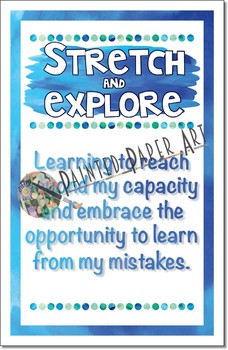

Thinking like an artist helps them develop habits that they’ll use no matter what they go on to do, and it has helped inculcate an ethic of perseverance, challenge, and craft to everything students do. It gives students a way to think about the world differently, to make connections, and to contemplate their place within it. Maya Lin is one of them.įor teachers at Maya Lin, integrating art throughout the curriculum and the school day is about making learning fun, multi-disciplinary, connected and creative. Several schools have led this movement, going all in on art at a time when many schools around the country were slashing their arts budgets. This isn’t a new idea – some educators have long believed in and used art as part of their practice – but now there’s more research to back it up, including work out of Harvard’s Project Zero. Studies like this one have led to a resurgence of interest in arts integration, a pedagogy that uses art as a vehicle for learning about any subject. Arts integration was particularly helpful for students with the lowest reading scores. She and her team found that arts integration instruction led to long-term retention of science concepts at least as successfully as conventional science teaching.
#Stretch and explore studio habits of mind trial#
Johns Hopkins University professor Mariale Hardiman published a 2019 paper in Trends in Neuroscience and Education describing the results of a randomized, controlled trial she conducted in fifth grade science classrooms. Now, many educators are starting to realize the folly of these practices, backed up by an increasingly robust body of research about the power of art to improve learning. These subjects became afterthoughts as school leaders put pressure on teachers to raise kids’ scores in the ‘focus’ subjects – math and reading. Over the past two decades, policies focused on math and reading test scores, along with a global recession, have pushed many schools to cut what they considered to be “extras.” In many places, that has meant visual art, music, drama, and dance. The fact that students were showing their knowledge of science through their artwork here struck me as unique. At a lot of schools I’ve visited, art is relegated to a separate class once a week. John’s persistence – and the sheer number of hours he was allotted for artwork during school hours – stood out to me. He says he was frustrated, but he pushed through those feelings and tried something different. He described several early attempts at creating effects that didn’t work – at first, he wanted his sun to be three-dimensional, but couldn’t get it to stay up. I was struck by how much John could tell me both about the iterative creative process he went through, and the science his work represented. John's artwork depicting the greenhouse gas effect. He’d also used collage to create a translucent effect for the atmosphere. So I drew those spots in and then I put tape over it and then I dabbed the paintbrush so it looked like spots, and then the spots where I put tape were still paper white,” he explained. “I saw a picture of the sun to try and draw it and there were spots where it was really really bright.

I asked him about the artistic techniques he used to create a blotchy effect on the sun. “I made a project with one of my friends about the greenhouse effect and how the sun’s heat rays go in, and the heat gets trapped inside the atmosphere and heats up the earth,” said John. One boy, John, showed me his model and described the science behind it. They studied how the greenhouse gas effect works and made a visual model of it. In the process, they learned what fossil fuels are, where they come from, and how they’re extracted. They also wrote books about how climate change will affect their climates and the animals that live there. In art class, they created artistic representations of their climates using either a torn-paper collage technique or oil pastels. Pairs of students had chosen climates around the world and researched them to learn about the weather, flora and fauna.

When I visited Maya Lin, an elementary school in Alameda, California where art is at the center of learning, third graders were in the middle of a multi-week project on climate change. Via Apple Podcasts | via Stitcher | via NPROne | via Spotify Listen and subscribe to our podcast from your mobile device:


 0 kommentar(er)
0 kommentar(er)
